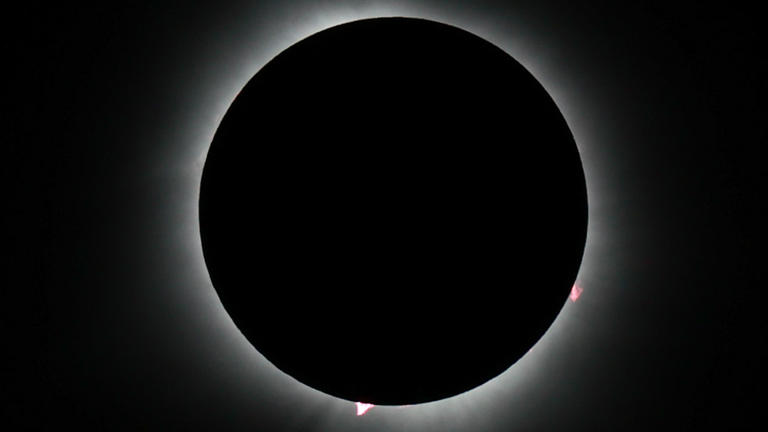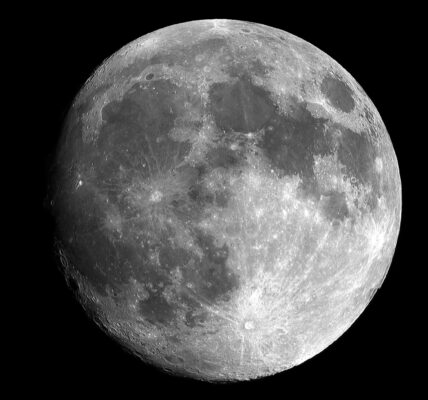Psyche spacecraft mission embarks on an extraordinary journey to the metal-rich asteroid 16 Psyche, using advanced ion propulsion to explore the solar system and gather valuable scientific data.
Psyche Spacecraft Mission: Journey to the Metal-Rich Asteroid
The Psyche spacecraft mission is a remarkable venture by NASA, aiming to explore the metal-rich asteroid 16 Psyche. After its launch on October 13, 2023, the spacecraft has now transitioned to using its ion thrusters, powered by solar-electric propulsion, to cruise through space.

© Provided by Space
Launch and Initial Boost
The Psyche spacecraft mission began with a significant boost from its launch vehicle, propelling it over 190 million miles (300 million kilometers) beyond Mars’ orbit. This initial thrust was crucial to get the spacecraft on its way. Now, the onboard ion engines have taken over, guiding Psyche through its long journey.
How the Ion Thrusters Work
The ion engines are a key component of the Psyche spacecraft mission. These engines work by converting sunlight into electricity through the spacecraft’s solar arrays. This electrical energy creates an electromagnetic field that accelerates and expels ions—charged particles—of xenon gas. As these ions are expelled, they produce a gentle but continuous thrust that propels the spacecraft forward.
Gentle Yet Powerful Thrust
Despite the ion thrusters’ gentle force, equivalent to three coins pressing into your hand, this small thrust can build up over time in the vacuum of space. Without atmospheric friction, this steady push allows the spacecraft to accelerate gradually. The Psyche spacecraft mission has seen the spacecraft reach speeds of 84,000 miles (135,000 kilometers) per hour, with a goal of reaching 124,000 miles (200,000 kilometers) per hour.
Journey Towards Mars
As part of the Psyche spacecraft mission, the spacecraft will use a gravity assist maneuver around Mars in May 2026. During this maneuver, Psyche will temporarily shut down its ion engines and use Martian gravity to gain additional speed. This gravity assist is a critical step in reaching the asteroid 16 Psyche.
Arrival at Asteroid 16 Psyche
After the gravity assist, the ion engines will power back up, and the Psyche spacecraft mission will continue towards its destination. The spacecraft is expected to arrive at the asteroid 16 Psyche in 2029. Upon arrival, Psyche will enter orbit around the asteroid and begin a detailed study that will last for at least two years.
Scientific Goals of the Mission
The Psyche spacecraft mission is particularly exciting because 16 Psyche is a unique target. It is believed to be a large, 173-mile-wide (280-kilometer-wide) fragment of an ancient planet’s metallic core, dating back to the early days of our solar system, about 4.5 billion years ago. By studying this asteroid, scientists hope to gain insights into the interiors of rocky planets like Earth and learn more about how these planets formed.
Instruments and Data Collection
Throughout its journey, the Psyche spacecraft mission has not been idle. The spacecraft is equipped with a variety of scientific instruments. Its magnetometer and gamma-ray and neutron spectrometer have been busy collecting data, such as detecting charged particles from solar coronal mass ejections. This data is valuable for understanding both the spacecraft’s immediate environment and the broader space weather phenomena.
Testing New Technology
Another exciting aspect of the Psyche spacecraft mission is the testing of a new deep-space optical communications system. Instead of traditional radio waves, this system uses lasers to transmit data across vast interplanetary distances. A test of this system in April exceeded expectations, successfully beaming back data at a rate of 267 megabits per second from a distance of 226 million kilometers (140 million miles). This bit rate is comparable to the broadband speeds we enjoy at home, showcasing a significant advancement in space communication technology.
Mission Progress and Updates
According to Henry Stone, the Psyche project manager at NASA’s Jet Propulsion Laboratory, the mission is progressing smoothly. This positive update reassures that the Psyche spacecraft mission is on track and functioning as expected.
Legacy of Ion Propulsion
The Psyche spacecraft mission is not the first to employ ion engines for deep-space travel. NASA’s Dawn mission, which explored the asteroids Ceres and Vesta, also used solar-electric propulsion. These missions demonstrate that ion propulsion, once a concept of science fiction, is now a reality, enabling humanity to explore deeper into our solar system than ever before.
Conclusion
The Psyche spacecraft mission is a pioneering effort to explore an ancient, metal-rich asteroid and unlock the secrets of our solar system’s early history. With its advanced ion propulsion and innovative technology, Psyche is set to make groundbreaking discoveries that will enhance our understanding of planetary formation and evolution. As the spacecraft continues its journey, we eagerly await the wealth of knowledge it will bring back from 16 Psyche.
ALSO READ:
“Oxygen-rich Mars: 5 Astonishing Revelations”


